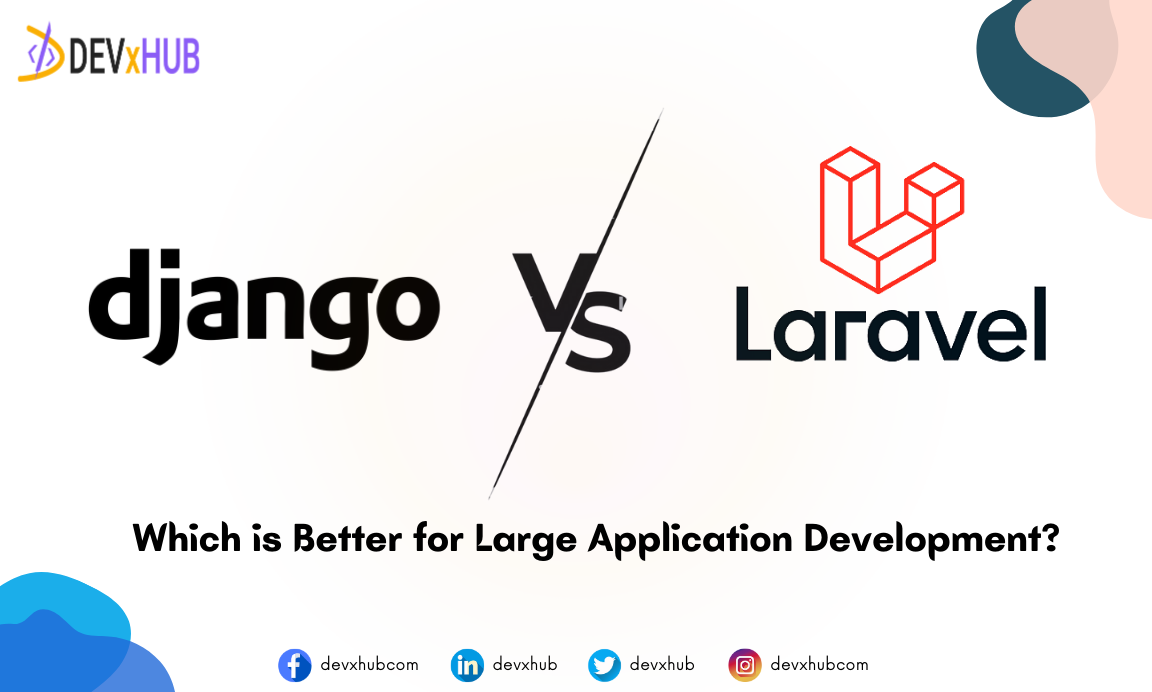Blog - Laravel vs Django: Which is Better for Large Application Development?
Introduction:
In today’s digital world, application development is a vital aspect of business growth. However, when it comes to large application development, choosing the right framework is of utmost importance as it can have a significant impact on your project’s success. Two of the popular frameworks widely used for large application development are Laravel and Django. Laravel is a PHP-based framework, while Django is a Python-based framework. Both come with their own set of features and functionalities that make them ideal for large application development. In this blog post, we will be comparing Laravel and Django to find out which one is better for large application development.
Scalability
Scalability is one of the critical aspects of large application development. When it comes to Laravel, it offers good scalability options, making it ideal for large application development. Laravel’s Artisan command-line interface makes it easy to create new controllers, models, and migrations, allowing developers to quickly expand the application as per the project’s requirement. On the other hand, Django also has excellent scalability options. Django’s scalability lies in its robust ORM, which makes it easy for developers to handle large datasets and queries.
Security
Security is a crucial aspect of large application development. Laravel comes with a set of security features like CSRF (Cross-Site Request Forgery) protection, SQL injection prevention, and XSS (Cross-Site Scripting) protection. Additionally, Laravel features built-in hashing and encryption mechanisms that make it easy to secure web applications. In comparison, Django has a reputation for being secure. The framework comes with several security features like SQL injection prevention, protection against Cross-Site Scripting (XSS) attacks, and clickjacking protection.
Performance
Performance is another important aspect to consider when it comes to large application development. Laravel uses the Blade template engine, which makes it easy to generate personalized and dynamic content efficiently. Moreover, Laravel also includes several caching mechanisms, including file cache, Redis cache, and Memcached cache. On the other hand, Django’s templating engine is based on Jinja, which is fast and efficient. Additionally, Django comes with a built-in caching system that supports various cache backends, including Redis and Memcached.
Framework Ecosystem
Both Laravel and Django have a vast ecosystem of packages and tools that make it easy for developers to build complex applications efficiently. Laravel’s ecosystem is based on Composer, the PHP package manager, which features a plethora of packages. Django’s ecosystem is based on PyPI and provides access to a wide range of libraries and packages.
Learning Curve
The learning curve is an important aspect when it comes to choosing the right framework, especially for large application development. Laravel has a relatively low learning curve, making it easy for developers to get started with the framework. The framework is also well documented, making it easy to find resources and tutorials. Django is slightly more challenging to get started with compared to Laravel. However, once the basics are understood, the framework becomes easy to use, and Django’s documentation is comprehensive.
Conclusion:
Both Laravel and Django are excellent choices for large application development. Laravel has excellent scalability, security features, and performance options, making it ideal for web applications that require real-time data updates. On the other hand, Django, with its robust ORM, is ideal for handling large datasets and queries. One of the key differences between the two frameworks is the language – Laravel uses PHP, while Django uses Python. Choosing the right framework ultimately depends on the project’s requirements; if your project requires strong data handling, Django might be the right choice. However, if your application needs real-time data updates, Laravel might be a better fit.
Related Posts
Categories
- App Development (2)
- Design (2)
- DEVxHUB (30)
- Digital Marketing (2)
- Guide (24)
- It Bangladesh (1)
- Logo design (1)
- Operating system (1)
- Personal Improvement (14)
- Planning (4)
- Project management (3)
- Social media (2)
- Software Development (5)
- Software Quality Assurance (8)
- Startups (1)
- Team work (1)
- UI UX (1)
- Web Development (6)
Main Tags
- 2024
- Android
- app development
- bangladesh
- content writing
- design
- devxhub
- Digital marketing
- Guide
- IOS
- It
- logo design
- Operating system
- Personal Improvement
- planning
- project management
- social media
- Software Development
- Software Quality Assurance
- software testing
- software testing types
- Startups
- Success
- team
- UI UX
- UI UX design
- VR
- Web Development















